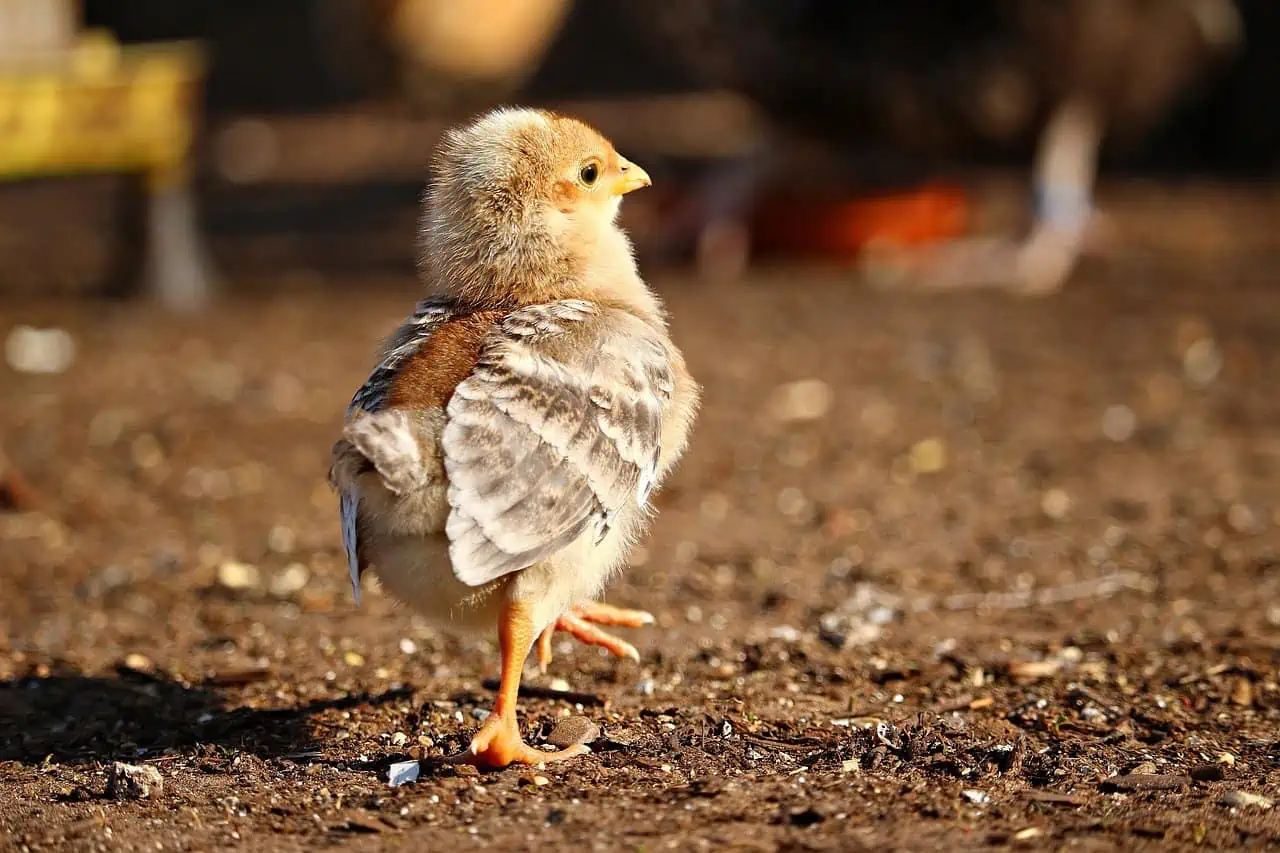Raising Your Chicks Week by Week
We have covered hatching eggs, now let’s dive into the world of raising your peeps to full grown chickens!
Congratulations on your new chicks! If you hatched them yourself, purchased them from a local breeder or ordered from a hatchery; chicks are as exciting as they are cute. Here we plan to cover day 1 to the day they go into their coop.
Warning: if you ordered chicks from a hatchery, be mindful that some or even all could arrive dead or dying… that is a risk with shipped chicks.
Your brooder
A brooder can be any number of things depending on how many chicks you have and where the brooder is located. As a general rule, brooder space should be 8 to 12 square inches per chick if you plan to keep them in the brooder the full 6 weeks. The brooder can be made from any number of materials, including but not limited to; a plastic storage bin, a water trough, a kiddie pool, a custom built brooder made of lumber or a brooder kit you can buy at a feed store or online; whatever you use, be sure it is free of drafts and out of any weather or direct sunlight. I recommend changing the brooder bedding every other day and if there is a water incident such as a leaky drinker, change bedding immediately, you can lose chicks very quickly if they get wet. The brooder must be located in an area that stays at least 55-60 degrees fahrenheit, any temperature below that is too cold to house the brooder.
Keep an eye on the brooder temperature
- Spread out, panting and getting far from the heat source = too hot
- Huddled in a pile close to the heat source chirping loudly = too cold
- Evenly spread out in the brooder peeping, eating,, drinking = the heat is just right
Signs of sickness and possible chick emergencies are
- Poop stuck to the vent (butt)
- Lethargy/inactivity
- Excessively staying under heat source
- Unabling to eat or drink
- Huddled or scrunched up posture
- Eyes closed while standing
- Drooping wings
- Bloody droppings
- Unable to walk correctly
- Weakness
- Wounds or swelling on the chick
- Head “stuck” tilted back or neck curled to the side
Things to have on hand
Here are the basics to have on hand when raising your chicks; chick crumbles, 20% protein or higher, a feeder and drinker, brooder heater plate, bedding such as pine shavings, newspaper, paper towels, hemp bedding or even sand. You already have your brooder set and ready. Some first aid items would be neosporin (non-pain relief) for minor wounds, Sav-a-chic for times of stress and transition, Corid in case of a coccidia outbreak, corrective leg hobbies (splay leg).
NOTE: Never use cedar shavings, it can be toxic to your chicks and fowl of any age.
Day 1
When your chicks arrive, dip their beaks into their water and their food, so they quickly learn what it is and where to find it. Chicks need 20% protein or higher chick crumbles or mash, fresh clean shallow water and heat. My favorite way to raise my chicks is with a chick brooder heater plate instead of a heat lamp. Adjust the brooder plates height to where it almost touches the chicks backs, they will warm up underneath it like its a mother hen and then they will come out to eat, drink and stretch their legs and wings.
Note: Be sure to adjust the heat plate as the chicks grow, make sure they can stand underneath it with the heater at their backs. Most heater plates have fully adjustable legs, while some may need small blocks to ad some height.
*Why I personally prefer brooder plates
I highly recommend and personally use brooder plates because 1, they are less of a fire hazard and 2, the use closely simulates the nature of being raised with a hen, which builds more resilient chicks that feather out faster and are better acclimated to the local climate. Using a heat plate over a heat lamp also allows for a day/night cycle instead of the unnatural 24/7 light. Why I don’t recommend heat lamps is because I myself have had a fire start from a “safely secured” heat lamp, thankfully I was nearby and stopped it before there was loss of life. I know people who were not so lucky, one lost her entire barn full of all her animals overnight and the other lost their home! If you decide to use a heat lamp, research and be very cautious, but I do not recommend them to anyone.
Some popular brooder plates are, in no particular order:
- Sweeter Heater
- Brinsea Ecoglow
- Premier Chick Brooder heating plate
- RentACoop Chick Brooder heating plate
- Rural 365
- Producer’s Pride brooder and coop heater
Week 1
During the first week, chicks will nap, a lot! And sometimes will nap in “unnatural” positions that may startle you, as long as they are bright eyed and active when awake, all is well! Monitor each chick for “pasty butt”, that is when droppings get stuck on their down and can plug them up, if this happens, give their little butt a warm soak and gently cleanse the area. If you see a dark, dry string hanging from their belly, leave it alone! It is an umbilical cord that has not fallen off yet,, pulling it can severely harm the chick. Make sure everyone is eating, drinking and alert.
Week 2
Raise your heat source to lower the temperature by 5 degrees. Chicks start growing feathers after day 7, so don’t be surprised if the hopping around turns into mini flights and possible escape attempts! Be sure your brooder is safely covered. Chicks are also messy, loving to scratch and peck in their bedding materials, which can get dusty, while also covering their food and water with shavings! At this age I recommend elevating their food and water with a brick or block of wood to help it stay clean.
Weeks 3-4
By this stage, raise your heat source high enough to where it’s roughly 80 degrees. Now your chicks are flying, scratching, pecking and possibly ‘smelling’ more, you will find yourself having to clean the brooder more often, chicks poop, a lot. They are feathering out and not looking as cute at this point, they are growing rapidly. You can add a short roost pole at this stage for them to begin practicing roosting, just be sure the top of your brooder is secure and covered. At this age, on warm sunny days under supervision, you can start bringing your chicks outside for a few minutes to a couple hours a day, they will love it and benefit greatly from this.
Weeks 5-6
By now, most, if not all your chicks should be fully feathered! If your local temperatures are remaining at or above 50 degrees during the night, you can remove all heat sources from your brooder. Your chicks are looking like little chickens now and with many breeds you can probably identify the difference between the pullets and the cockerels by this age, your little cockerels are beginning to display their combs and wattles! NOTE: even if you purchased sexed day old pullets, there is a 5-10% chance of ending up with a boy or a few. Your chicks are most likely eating like teenagers coming home from school and keeping the water clean is a continuous battle, but fear not, moving day is fast approaching.
Weeks 7-8
On week 7,begin preparing the coop your chicks are moving into! If you already have adult chickens, then your chicks will need a coop of their own until they are grown, be sure to have it set up and ready. A larger feeder, larger waterer, a nesting box and roosting poles along with a nice, big run. Your pullets and cockerels will relish in the space! Moving day has arrived! Get your growing birdies out into their new coop at the beginning of the day so they have plenty of time to explore, avoid rainy days unless the entire structure is covered. At sunset each day for a week or so, you will have to put the chicks into their coop in order to train them on where they should go.
9 weeks and beyond
From move out day until approximately 18 weeks of age, continue to feed starter/grower feed to your chicks, then at the 18 week or the appearance of your first pullet egg, transition your birds to a complete layer crumbles over the course of one week, mixing more and more layer until there is no longer chick feed being used. If you prefer pellets, use the same transition of mixing it but possibly at a slower rate to be sure they are eating the pellets instead of just picking around it for the crumbles. At this point, once all milestone transitions have been made, you are good to go!
In Summary
Chicks are cute, fun and grow fast! Once you have it down the first time, it becomes second nature to you. Have your brooder ready, know your temperatures, have the basics on hand, watch their health and behavior. Whether you hatch your own, purchase from a breeder or from a mail order hatchery, chick care is the same from day one to first egg, enjoy the journey and happy chickens!
OhCluck.com is a participant in the Amazon Services LLC Associates Program, an affiliate advertising program designed to provide a means for sites to earn advertising fees by advertising and linking to Amazon.com
Comments
0 comments

